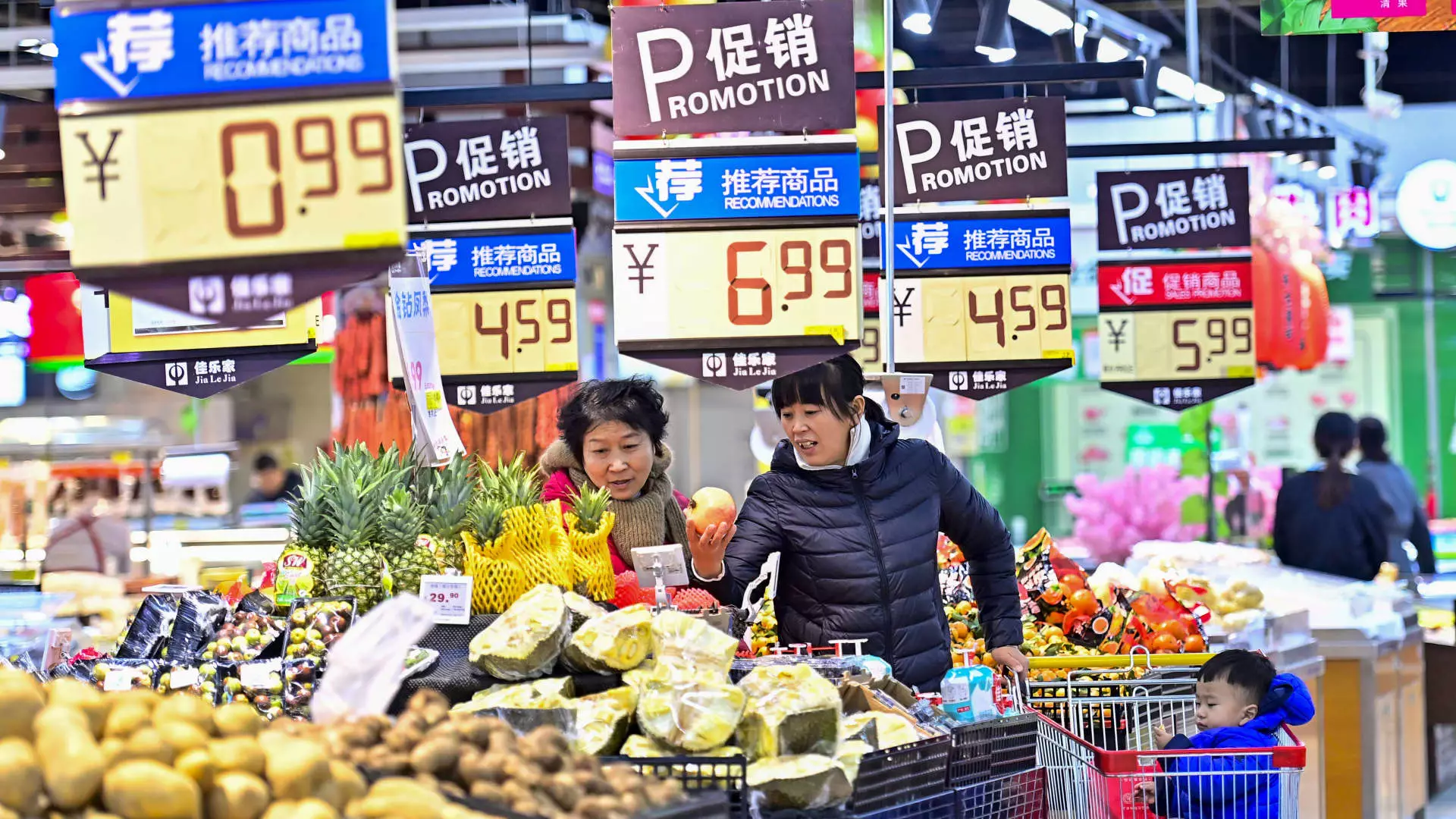The economic landscape of China has raised considerable concerns as data reveals a significant decline in consumer price inflation towards the end of 2023. This situation is being closely monitored by economists, as the figures could indicate an alarming trend of deflation, which poses risks for the broader economy. In December, the National Bureau of Statistics reported that consumer price inflation dwindled to just 0.1% on a year-on-year basis, reinforcing fears about the trajectory of domestic demand.
The latest inflation data is crucial for interpreting the current state of the Chinese economy. The slowing inflation at 0.1% was slightly in line with market expectations but marked a downtrend from November’s 0.2% increase. More telling was the core Consumer Price Index (CPI), which excludes volatile food and energy prices, that recorded a year-on-year rise of 0.4%, showing an increase from the previous month’s 0.3%. This suggests that while some sectors are displaying modest resilience, overall consumer prices are stagnating.
Looking at month-on-month changes, the CPI remained flat, contrasting with a 0.6% decline observed in the preceding month. This lack of upward momentum in consumer prices is alarming as it reflects consumers’ reluctance to spend in the face of economic uncertainty. Food prices particularly played a key role in the overall CPI performance, demonstrating a decline of 0.6% month-on-month, largely attributed to favorable weather conditions yielding a drop in fresh produce prices, including a notable 2.1% fall in pork prices which are integral to the expense basket for many Chinese households.
The continuous downtrend in consumer inflation signals a troubling lack of domestic demand, which is further complicated by shrinking producer prices. The Producer Price Index (PPI) fell by 2.3% year-on-year in December, marking the 27th consecutive month of decline. The decline in PPI was marginally better than analysts’ expectations of a 2.4% decrease, yet it still paints a gloomy picture of industrial health where sustained demand is absent, especially in sectors reliant on construction and real estate, which have faced seasonal slowdowns.
As economists have indicated, the near-zero inflation indicates a deflationary landscape that could exacerbate economic challenges. Despite various stimulus initiatives introduced by Beijing, including interest rate cuts and efforts to bolster the real estate market, consumption remains tepid. These measures have not translated into increased consumer confidence or spending, raising pertinent questions about their efficacy.
In response to declining consumption, the Chinese government has initiated several measures, including an expanded trade-in scheme aimed at encouraging consumers to trade in old appliances for newer models via subsidies. While this initiative appears promising, critics like Louise Loo from Oxford Economics argue that these quick-fix measures cater only to specific products and fail to stimulate overall consumption.
According to Loo, there are lingering impacts when such subsidies are employed; customers essentially defer their spending, resulting in a cyclical pattern that could hinder future consumer expenditures. Shaun Rein, a managing director at the China Market Research Group, echoes this sentiment, stressing that while programs such as “cash for clunkers” can entice purchasing, they are insufficient to lift the retail sector’s broader appeal.
Looking ahead, the outlook remains mixed. While some indicators, such as factory activity growth over the last three months, hint at potential recovery, challenges loom large in the form of ongoing issues in the property sector and strained trade relations with key global partners like the United States. Carlos Casanova, a senior economist, points out that despite signs of stability, substantial hurdles remain before the Chinese economy can regain its footing.
While the data suggests minor expansions in certain sectors, the overarching trend points towards an economy grappling with deflationary pressures and sluggish domestic consumption. As policymakers strive to ignite consumer spending, the ultimate indicators of success will lie in how effectively they can convert current initiatives into sustained economic growth without falling into further stagnation.


Leave a Reply